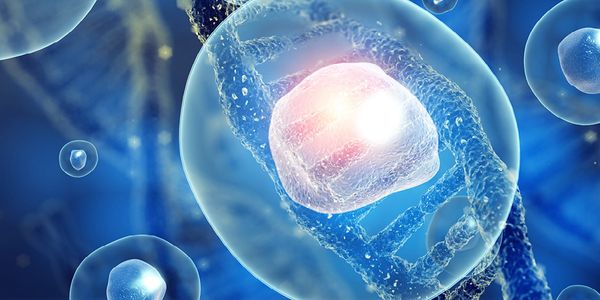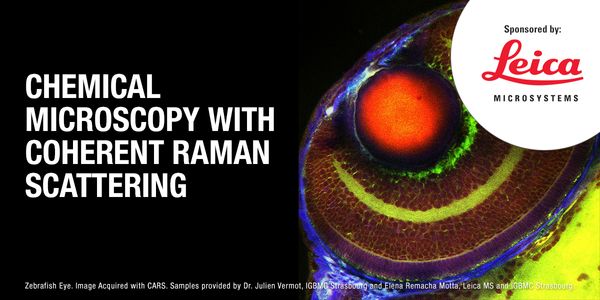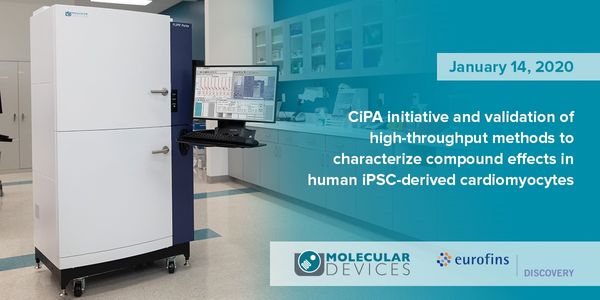Disease Modeling
Disease modeling is the use of a disease model, which is an animal or cells containing all or some of the pathological characteristics and mechanisms of a disease, to study that particular disease.
-
APR 14, 2020 | 9:00 AMDATE: April 14, 2020 TIME: 9:00am PDT, 12:00pm EDT Besides being Gibco Cell Culture Heroes, what do Vivek, Sandra, Daisy, Ameet and Kristine all have in common? They are all stuck at home fo...Speaker: Kristine Wadosky, PhD , Ameet Chimote, PhD , Elizabeth Delery, PhD , Daisy Shu, B.Optom, PhD , Vivek Kamat, PhD , Sandra Hammer, PhDSponsored By: Thermo Fisher Scientific/GibcoMAR 27, 2020 | 9:00 AMDATE: March 27, 2020 TIME: 9:00am PDT, 12:00pm EDT Osteoporosis causes a decrease in bone density, along with deterioration of the bone’s microarchitecture at a faster rate than normal...MAR 24, 2020 | 11:00 AMDATE: March 24, 2020 TIME: 11:00am PT, 2:00pm ET While in vitro cell culture has long been used to study neurological diseases, researchers have come to the realization that 2-D systems do n...MAR 24, 2020 | 10:00 AMDATE: March 24, 2020 TIME: 10:00 am PDT, 1:00pm EDT The Clampfit software module is a useful tool to manipulate and analyze electrophysiological data acquired by pCLAMP™ software. Rece...MAR 18, 2020 | 6:30 AMDATE: March 18, 2020 TIME: 6:30am PT, 9:30am ET Presentation: Chemical Imaging for Biomedicine: the Next Frontier of Light Microscopy Dr. Wei Min, Columbia University www.columbia.edu/cu/che...MAR 17, 2020 | 8:00 AMDATE: March 17, 2020 TIME: 8:00am PT, 11:00am PT Cell Signaling Technology: The determination of target specificity in immunohistochemical analysis requires multiple validation steps. This w...Speaker: Bill Kennedy , Christopher GrangeSponsored By: Akoya Biosciences, Cell Signaling TechnologyIdentifying the diversity of neuronal cell types of the nervous system is one of the main objectives of the BRAIN Initiative, with the vision that distinct neuronal identities will allow for...Speaker: Giorgio Ascoli, PhD , Hong-Wei Dong, MD, PhD , Byungkook Lim, PhDPresented at: Neuroscience Virtual Event Series 2020
Learning is often an emotional process. Emotional stimuli with different valences, such as threat and reward, can transform an otherwise neutral sensory input into one that can trigger disti...
The accumulation of neurotoxic amyloid beta peptides and/or neurofibrillary tangle formation are key pathological hallmarks of neurodegenerative diseases including but not limited to Alzheim...
Speaker:
Michael Heneka, PhD
Although neuroscience has provided a great deal of information about how neurons work, the fundamental question of how neurons function together in a network to produce cognition has been di...
Speaker:
György Buzsáki, PhD
, Attila Losonczy
, Mark Schnitzer
, Ivan Soltesz
Presented at: Neuroscience Virtual Event Series 2020
FEB 26, 2020 | 9:00 AM
DATE: February 26, 2020 TIME: 9:00am PST 3D cell culture and analysis and the study of organoids and spheroids are becoming more prevalent as a research method in publications as traditional...
Learn how new hemophilia and anticoagulant therapies impact coagulation assays and clinical decisions in our educational session....
Speaker:
Donna Castellone, MS, MASCP, MT(ASCP) SH
JAN 30, 2020 | 9:00 AM
DATE: January 30, 2020 TIME: 9:00am PST, 12:00pm EST Recent advances in in vitro 3D cellular culture technologies, such as organoids, rapidly developed and established novel, more physiologi...
JAN 14, 2020 | 8:00 AM
DATE: January 14, 2019 TIME: 8:00am PST Drug-induced QT interval prolongation and Torsades de Pointes (TdP) arrhythmias are the leading causes for drug withdrawals from market and compound a...
Speaker:
Muthukrishnan Renganathan, PhD
, Panida Lertkiatmongkol, PhD
, Oksana Sirenko, PhD
, Carole Crittenden
Sponsored By: Molecular Devices,
Eurofins Discovery
The aim of the lecture is to give an insight into the use of 3D liver micro tissues (3D liMTs) in drug discovery and translational safety. In translational toxicology, 3D LiMTs have a high i...
The dopamine D4 receptor (D4R) is enriched in the prefrontal cortex where it plays important roles in cognition, attention, decision making and executive function. Novel D4R-selective ligand...
The OrganoPlate is a microtiterplate based Organ-on-a-Chip platform for high throughput drug safety and efficacy screening. It contains up to 96 cell culture chambers that allow co-culture o...
Speaker:
Sebastiaan Trietsch, PhD
Presented at: Drug Discovery & Development Virtual Event Series 2020























